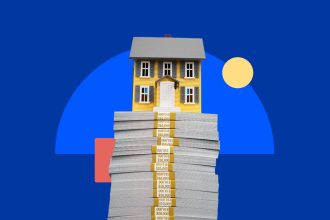Financial equality has come a long way in the United States — just over 50 years ago, women couldn’t take out a loan unless they cosigned with a man. But despite the progress, women still earn about 85 percent of what men earn, according to analysis by the Pew Research Center.
This gender pay gap can make it harder for women to repay debt as quickly as their male counterparts. This is especially true of student loans, where women tend to borrow more than men. To fully understand how gender affects borrowing for women, it helps to look back at some key milestones in the history of women, money and credit.
1848: Married women can control their own property
Until the mid-1800s, a woman couldn’t own real estate unless she was single. When a woman got married, she lost the right to acquire property, and her husband gained control of any property she previously owned.
In 1848, New York passed the Married Women’s Property Act, which allowed married women to own property. Most states had adopted similar versions of this law by 1900.
Impact on women using loan products
The right to own property offered a path to financial independence and wealth-building for married women.
However, the law didn’t give women access to lending or banking products. It would take several more decades before women could gain fair access to loan products.
The 1960s: Women can open bank accounts
American women gained legal access to banking products in the 1960s. However, many banking institutions still wouldn’t let women open a checking account, get a credit card or apply for a loan or mortgage without a male cosigner.
Impact on women using loan products
While this era marked the start of women being able to build credit under their own names, many banks continued to discriminate against them or require a man’s involvement. Women may have had the legal right to access loan products, but lenders largely prevented them from meaningfully participating in the market.
1963: The Equal Pay Act
The Equal Pay Act of 1963 prohibited employers from paying men and women differently for comparable work. This law coincided with women gaining access to bank accounts for the first time.
Impact on women using loan products
Since income is a key metric used by lenders in credit decisions, a lower wage results in borrowing power. The Equal Pay Act paved the way for more loan options for women, since they were able to earn comparable wages to their male counterparts.
However, gendered wage differences persisted despite the new law — and still continue today.
1972: The Equal Rights Amendment
The Equal Rights Amendment (ERA) was approved by Congress in 1972 to formally recognize “equality of rights under the law” for men and women at the federal level. The goal of the amendment was to eliminate disparities in how the law treated women and men on various issues, including property and employment.
Although it didn’t gain the 38-state support needed for ratification into law, ultimately failing to become the law of the land, it has served as a catalyst for other legal victories for women. The original ERA is credited with paving the way for the passage of the Voting Rights Act of 1965, which ratified a woman’s right to vote.
Impact on women using loan products
The Equal Rights Amendment would have formally recognized sex as a suspect classification like race, religion and national origin. This would have opened up many institutions and structures to increased scrutiny to ensure that gender-based discrimination does not take place.
The ERA was not adopted as a new constitutional amendment, but it did pave the way for the passage of the Equal Credit Opportunity Act.
1974: The Equal Credit Opportunity Act
The Equal Credit Opportunity Act (ECOA) of 1974 marked a significant turning point in the financial future of American women. Before the ECOA, women were more likely to be denied credit or offered less competitive terms than men, and many lenders still required a female applicant to have a male cosigner. The ECOA made it illegal for lenders to treat women differently when making credit decisions.
Impact on women using loan products
The ECOA opened the lending market to women, giving them a better chance to gain equal footing with men when it comes to borrowing money. In the more than 50 years since the ECOA was passed, women in the U.S. have attained equal access to credit products previously reserved for men.
Although men still retain a slight advantage in their credit scores compared to women, recent Federal Reserve data indicate that gender has a minimal impact on credit scores. Men and women also carry comparable amounts of debt.
1988: The Women’s Business Ownership Act
The Senate passed the Women’s Business Ownership Act (WBOA) to give additional financial assistance and mentoring support to small businesses owned and run by women. The act established the National Women’s Business Council, which provides support for women-owned businesses in the private and public sectors.
As a result, Women’s Business Centers in almost every state provide financial, management and marketing resources for women who want to start or need help running businesses. The centers also give women access to all the SBA’s loan and financial programs.
Impact on women using loan products
This law removed the requirement for a male relative to cosign for business loans. Between 2007 and 2018, entrepreneurship by women grew by 58 percent as a result of the WBOA’s efforts.
During the Biden-Harris administration, SBA lending to women-owned businesses went up by 70 percent, totaling over $5.1 billion in loans made to women in the fiscal year ending 2023. Despite the progress, only 45 percent of women applying for a loan were approved for the full amount, versus 55 percent of men-owned businesses.
2007: The Great Recession
Women were among the first to lose their jobs during the financial recession of 2007 to 2009, and they were disproportionately impacted by the ensuing mortgage crisis due to being more likely targets for subprime loans.
Women are slightly more likely to be targeted by predatory lenders, especially lower-income women and women of color. These lenders tend to prey on people during times of economic downturn, such as the recession.
Impact on women using loan products
The Great Recession and ensuing mortgage crisis left many Americans strapped for cash and drowning in debt. For American women, who were already behind financially and were among the first to lose jobs, this crisis elevated the risk of predatory lending and falling into an endless debt cycle.
Present day
When it comes to gender and debt, men tend to borrow more than women with most types of credit. Research by Experian found that the only place where women borrow slightly more than men is with student loans.
According to the data, men have 20 percent more personal loan debt than women, and 16.3 percent more in auto loan debt. Men and women are fairly evenly matched when it comes to credit cards and student loans, although women borrowed slightly more student loan debt (2.7 percent) than men. Men also carry about 10 percent more in mortgage debt than their female counterparts. Although women carry less total credit card debt than men, they have more open credit card accounts, according to Experian.
On the bright side, research by the Pew Research Center indicates that the gender wage gap has been narrowing over the past few decades. There has also been a surge in platforms to help women advance in the financial world. Platforms like Ellevest and Clever Girl Finance offer access to courses, coaching and other resources to promote financial literacy and growth among women, despite the challenges they may face.
Where do we go from here?
Women have made significant progress in gaining access to credit over the past 175 years or so. It was slow-going at first, with a hundred-plus year gap before the Equal Credit Opportunity Act created serious legal consequences for discriminating against women based on their gender.
Women now enjoy relative parity with men in credit scores and loan balances across all types of loan products. As the gender pay gap closes, women can qualify for loan amounts comparable to those of men and build wealth independently.
But there’s more work to be done. Research shows a direct correlation between labor force participation and financial inclusion — meaning that the more women participate in the labor force, the more they can participate in the financial world. Opening doors to senior- and executive-level positions for women will also help shrink income disparities in the U.S. and make it easier for women to access affordable credit.
Why we ask for feedback
Your feedback helps us improve our content and services. It takes less than a minute to
complete.
Your responses are anonymous and will only be used for improving our website.
Help us improve our content
Read the full article here














